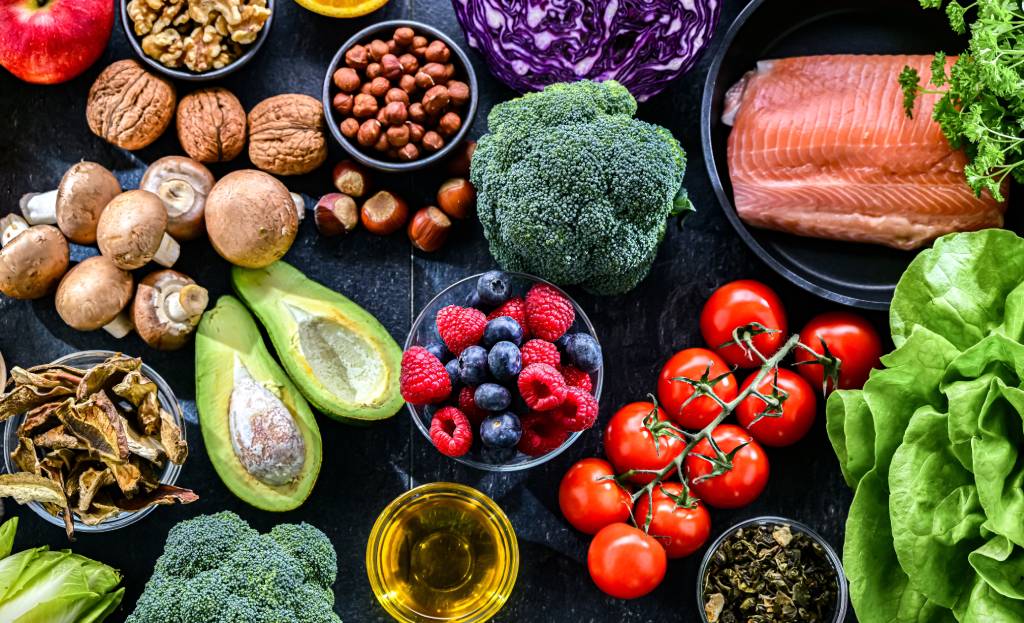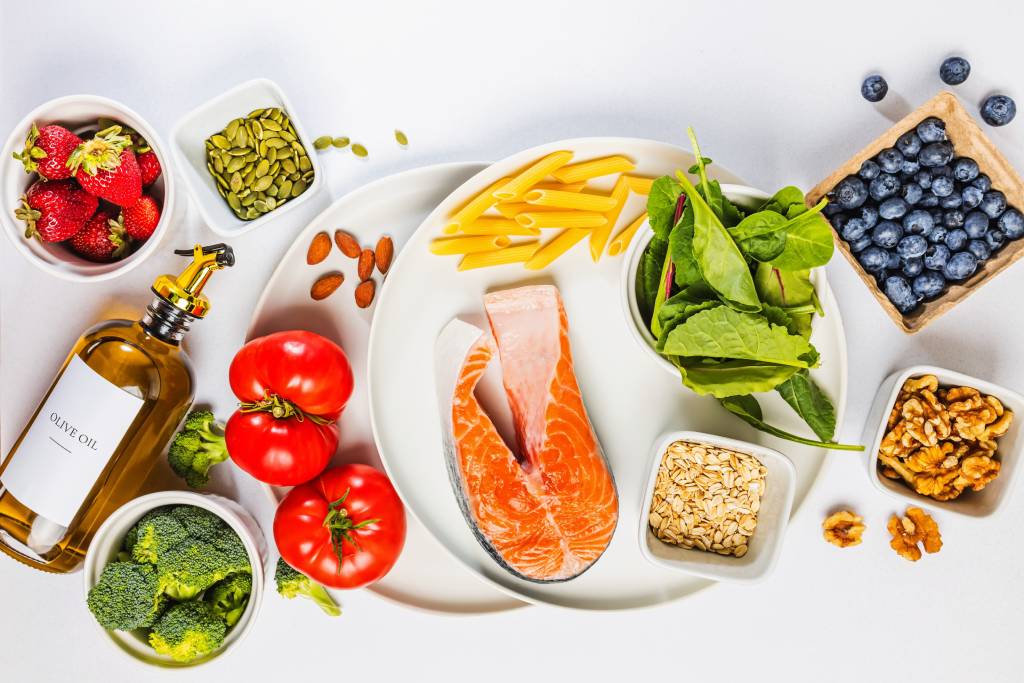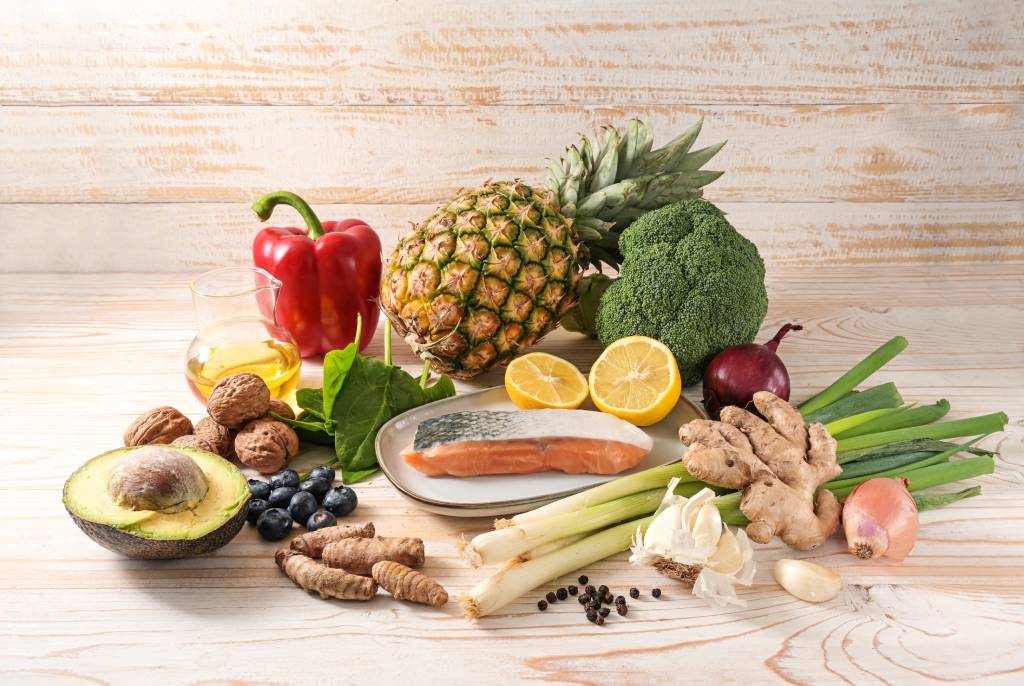TL;DR:
Chronic inflammation may increase the risk of prostate cancer. While some risk factors—like age or genetics—aren’t changeable, diet is. An anti-inflammatory diet with whole foods, fruits, vegetables, and lean proteins may reduce systemic inflammation and support better prostate health over time.
- Inflammation is linked to cancer development, including prostate cancer
- Diet is a powerful, controllable factor that affects inflammation levels
- Anti-inflammatory foods: fruits, vegetables, whole grains, olive oil, fish
- Inflammatory foods to avoid: processed meats, fried foods, excess sugar and alcohol
- Consistent, sustainable dietary changes are key to long-term benefits
Inflammation is a key risk factor related to prostate cancer. The exact nature of the connection between inflammation and prostate cancer is still being researched.
However, existing, peer-reviewed research makes the connection clear. This review of the relationship between inflammation and prostate cancer, published in the journal Histopathology, is just one example.
Inflammation can be caused by both controllable factors, like diet and lifestyle, and non-controllable factors, like genetics and age. While individuals can’t change their genetics, they can change their diet, among other adjustments to overall lifestyle.
Keep reading to learn more about the relationship between prostate cancer and inflammation. Key topics include basic and important details about prostate cancer, the role inflammation plays in prostate cancer, and practical suggestions for incorporating low-inflammation foods into a balanced diet to potentially reduce prostate cancer risk.
The Basics of Prostate Cancer: What You Should Know
What is the Prostate?
The prostate itself is a small gland located in the abdomen, situated below the bladder and in front of the rectum. The major functions of the prostate gland are to contribute prostate fluid to semen and help control the flow of urine.
What is Prostate Cancer?
Prostate cancer refers to the abnormal and uncontrolled growth of cells in the prostate gland. Prostate cancer often grows slowly and may only require minimal treatment.
However, faster-growing instances of prostate cancer require more aggressive treatment to try to prevent or control their spread to other areas of the body.
Prostate cancer is the second-most common cancer found in men, as the Centers for Disease Control and Prevention (CDC) explains. The incidence of prostate cancer increases with age.
What Causes Prostate Cancer and Who’s at Risk?
The exact cause or causes of prostate cancer are not yet known, as the Mayo Clinic explains. However, certain risk factors for prostate cancer have been identified. These risk factors for prostate cancer include:
- Age: Prostate cancer is more commonly diagnosed in older men, including otherwise healthy men.
- Family history: Men who have blood relatives with prostate cancer diagnoses have a higher risk of developing it themselves.
- Race and ethnicity: Black men have a higher risk of prostate cancer.
- Inherited gene mutations: Certain gene mutations raise the risk for prostate cancer.
- Diet and lifestyle choices: Red meats, alcohol, dairy, processed meats, saturated fats, and certain other foods can raise the risk of prostate cancer, as can smoking and obesity. Addressing these modifiable prostate cancer risk factors can play a key role in prostate cancer prevention.
What are the Treatment Options for Prostate Cancer?
Traditional treatments for prostate cancer range from monitoring through watchful waiting or active surveillance to radiation therapy and surgery, such as radical prostatectomy (removal of the prostate gland).
MRI-guided, minimally invasive treatment options for prostate cancer have emerged as effective alternatives for qualifying patients. Laser focal therapy (LFT) offers a high degree of precision in treatment, while transurethral ultrasound ablation (TULSA-PRO) allows for wider coverage in treatment. Both of these minimally invasive treatment options have a lower risk of serious side effects compared to a radical prostatectomy or radiation.
Inflammation and Its Role in Prostate Cancer
How Inflammation Contributes to Cancer Risk
Research published in the peer-reviewed journal Nature explains that inflammation can play a key role in the development and progression of cancers. “Many cancers arise from sites of infection, chronic irritation, and inflammation,” the research explains.
Chronic inflammation may damage cells in the prostate over time and make them more likely to develop cancer. Research published in the peer-reviewed Journal of Translational Genetics and Genomics states, “Chronic inflammation and its role in driving cellular plasticity have recently been documented as a significant risk factor for prostate cancer.”
A systematic review of research related to prostate cancer and inflammation published in the peer-reviewed journal Frontiers in Oncology finds that a variety of factors can increase inflammation and therefore prostate cancer risk, including factors like genetics, infections, genetics, and even certain prostate cancer treatments.
Uncontrollable vs. Controllable Causes of Inflammation
Some risk factors for prostate cancer are non-modifiable or uncontrollable, such as:
- Family history of prostate cancer.
- Inherited genetic mutations.
- Age.
- Certain medical issues.
These risk factors are certainly worth understanding, but on a practical level, they cannot be addressed or reduced.
However, other risk factors are modifiable or controllable, meaning they can be controlled by individuals to reduce inflammation and other potential causes of prostate cancer. These include:
- Diet.
- Exercise.
- Sleep schedule.
- Lifestyle choices, like smoking and alcohol use.
- Stress management.
- Frequency of ejaculation.
Managing inflammation, such as by avoiding inflammatory foods and consuming prostate health foods (which are explored in more detail later on in this article), among other lifestyle changes, may help to reduce the risk of prostate cancer.
Why Diet Is a Powerful Tool
Dietary changes can have some of the most significant day-to-day impacts in terms of reducing inflammation. Certain anti-inflammatory foods help reduce systemic inflammation, supporting a healthier prostate environment and a healthier overall environment for your body.
People need to eat regularly, so choosing anti-inflammatory or non-inflammatory foods can lead to benefits in the long run.
Johns Hopkins shares examples of illnesses where chronic (long-lasting) and systemic (across the body, not localized) inflammation is a factor, ranging from type 2 diabetes to heart disease, cancer, and arthritis.
The organization also shares many examples of inflammatory foods, including but not limited to red meat, processed meat, baked goods made with white flour, deep-fried foods, and foods high in added sugar.
In the big picture, reducing inflammation through diet can help not only to reduce the risk of prostate cancer, but also the risk of other health issues.
Anti-Inflammatory Foods That Support Prostate Health
What are the Best Foods for Reducing Inflammation?
What are the best foods for prostate health? In general, they’re foods that reduce or don’t encourage inflammation when consumed. While there is no clear evidence of certain foods that shrink the prostate gland specifically, the following foods can help to reduce overall inflammation and prostate cancer risk.
There isn’t a universal, detailed dietary plan for reducing inflammation. However, many foods can be easily added to or increased within personal diets that have positive effects related to inflammation.
In general, whole and unprocessed or minimally processed foods are the foundation of an anti-inflammatory diet. These foods generally retain more of their original nutritional value and contain fewer or no additives with inflammatory properties. Examples of minimal processing include washing, cutting, freezing, drying, and pasteurization.
Consider adding these foods to a diet to reduce inflammation and prostate cancer risk, including many foods suggested by Harvard Health Publishing:
- Fruits, such as strawberries, bananas, cherries, citrus fruits, and blueberries, among others.
- Vegetables, ranging from carrots and tomatoes to sweet potatoes, mushrooms, tomatoes, and many others.
- Whole grains, such as brown rice, millet, barley, farro, quinoa, and bulgur (cracked wheat).
- Olive oil.
- Leafy greens, like kale and spinach.
- Legumes, such as beans, lentils, peas, and soybeans.
- Lean proteins, which include many legumes as well as white-fleshed fish, turkey, chicken, low-fat Greek yogurt, low-fat milk, cottage cheese, and many other options.
- Fish, especially fish high in omega-3 fatty acids.
Foods to Avoid or Limit as Part of an Anti-Inflammatory Diet
Inflammatory foods are often highly processed, high in certain fats, and contain high amounts of certain added ingredients, such as sugar. These seven worst foods for prostate health are among the foods to avoid for an anti-inflammatory diet. Specific examples include:
- Excess red meat, such as beef, pork, veal, lamb, and mutton. Occasional consumption of lean red meat is less of a concern, although still worth monitoring. It is also possible that the added hormones fed to these animals may be contributing, so try to get meat from animals with no added hormones.
- Processed meats, such as sausage, deli meats or lunchmeat, and hot dogs.
- Sugary beverages, like sodas and energy drinks, and refined carbohydrates in general. Sweet snacks and desserts, especially those made in commercial bakeries, are examples.
- Fried foods, like French fries, fried chicken, and other breaded or battered foods cooked by submerging them in hot oil.
- Trans fats.
- Excessive alcohol.
Tips for Starting an Anti-Inflammatory Diet
- Focus on whole, minimally processed, colorful foods.
- Shop the perimeter of the grocery store, where more fresh foods are available.
- Prepare batches of meals with healthy ingredients, like lean protein, fish, fruits, and vegetables, in advance to have consistent access to anti-inflammatory foods.
- Stay hydrated – water, unsweetened fresh-brewed tea, seltzers without sweeteners, and similar sugar-free, minimally processed beverages can support prostate health.
One final piece of guidance: Make sustainable changes and work toward progress over time when building an anti-inflammatory diet. Too many drastic changes in too short a time can make it more difficult to stick with a plan.
It can be easier, and more productive in the long run, to adapt to and even enjoy smaller changes and then build on them. Make a plan, stay accountable, and keep working toward your goal.
Treatment Options for Prostate Cancer
Prostate Laser Center offers minimally invasive, MRI-guided treatment options for prostate cancer to qualifying patients. Schedule a consultation today to learn more.
NOTE: The information provided on this website is general medical information and does not establish a physician-patient relationship. Please discuss your particular situation with a qualified medical professional.



